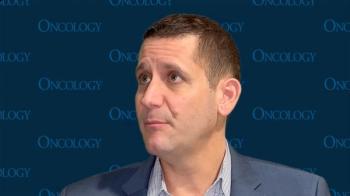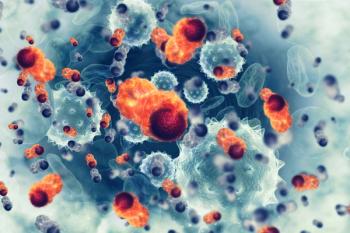
Nodal Recurrence Appears Low After Neoadjuvant Chemotherapy in Node+ Breast Cancer
Patients with clinically lymph node–positive breast cancer who achieved cN0 disease following treatment neoadjuvant chemotherapy with 3 or more negative sentinel lymphoma nodes identified by sentinel lymphoma node biopsy alone had a decrease in nodal recurrence.
Patients with cN1 breast cancer that was reduced to cN0 following treatment with neoadjuvant chemotherapy who had 3 or more negative sentinel lymph nodes (SLN) identified via SLN biopsy appeared to have a lower rate of nodal recurrence without nodal clipping, according to a study published in JAMA Oncology.
At the median follow-up of 40 months, investigators reported 1 case of axillary nodal recurrence that was synchronous with local recurrence in a patient who refused treatment with radiotherapy. In the 205 patients who received radiotherapy, there were no cases of nodal recurrences.
“These findings add to the existing literature demonstrating the oncologic safety of SLNB alone after [neoadjuvant chemotherapy] in patients with cN1 breast cancer and confirm rates of axillary recurrence comparable to those observed in other retrospective studies,” the investigators wrote.
A total of 769 patients with stage II to III biopsy proven node-positive breast cancer enrolled on the study and received neoadjuvant chemotherapy and axillary surgery. In the population, 610 patients had cN1 disease, and were eligible for SLNB after receiving neoadjuvant chemotherapy. Of these patients, of whom 555 achieved cN0 disease through physical examination and then subsequently received SLNB. Among these patients, 513 had 3 or more SLNs. Surgeons were able to avoid axillary lymph node dissections (ALND) in 234 patients who had 3 or more pathologically negative SLNs.
Patients had a median age of 49 years, and the majority were premenopausal (54%). Most patients were White (54%), Asian (15%), and Black (12%). Additionally, most patients had ductal histology (90%) and poor differentiation (83%). In terms of receptor status, 34% of patients were hormone receptor (HR)–positive/ERBB2-positive, 28% were HR-negative/ERBB2-positive, 20% were HR-positive/ERBB2-negative, and 18% were HR-negative/ERBB2-negative. There was also an even split between patients who received breast-conserving surgery and mastectomy.
At the time of follow-up in a population of 234 patients, 224 had at least 1-year of follow-up, and 24 patients were lost to follow-up.
Six years following surgery, 1 patient developed an isolated local recurrence and, overall, 13 patients had distant recurrence, all of which were isolated distant failures. At 5-years, the distant recurrence-free survival was 92.7% (95% CI, 86.7%-96.1%). Additionally, during the study period, 10 patients died, and the 5-year overall survival was 94.2% (95% CI, 89.0%-97.0%).
“Given that the prospective studies that established the accuracy of SLNB in this patient population all required ALND, studies like ours provide important data regarding the oncologic safety of surgical de-escalation in patients with cN1 disease after treatment with [neoadjuvant chemotherapy],” the investigators concluded.
Reference
Barrio AV, Montagna G, Mamtani A, et al. Nodal recurrence in patients with node-positive breast cancer treated with sentinel node biopsy alone after neoadjuvant chemotherapy-a rare event. JAMA Oncol. 2021;7(12):1851-1855. doi:10.1001/jamaoncol.2021.4394
Newsletter
Stay up to date on recent advances in the multidisciplinary approach to cancer.
















































































